Space is at a premium in urban centres, and you might not have enough space in your backyard to plant as many vegetables as you like. But have you ever thought of going out into your front yard? In some neighbourhoods, the front yard space is even larger than the backyard space, and can easily help you double your available gardening space.
If you’re thinking of starting a front yard vegetable garden, check with your city or municipality if you are allowed, ask for a line locate from your power, energy, or cable company, and start dreaming up your new raised bed vegetable garden!
In this blog post, I’ll tell you how I made over part of my front yard into a raised bed vegetable garden. And, if you want to see what else we did to landscape our front yard and create curb appeal, check out this video:
This post contains affiliate links, which means that if you purchase anything, I earn a small commission at no extra cost to you. You can read more about it in my privacy policy.
The Before
When we started transforming our front yard into a usable small space garden, it was pretty uninspiring, to say the least. In a previous year, my husband constructed these cheap wooden raised beds for me because I could not fit everything I wanted to plant in the backyard. I had even more plans to expand my vegetable garden, so the dried-out potentillas had to go.
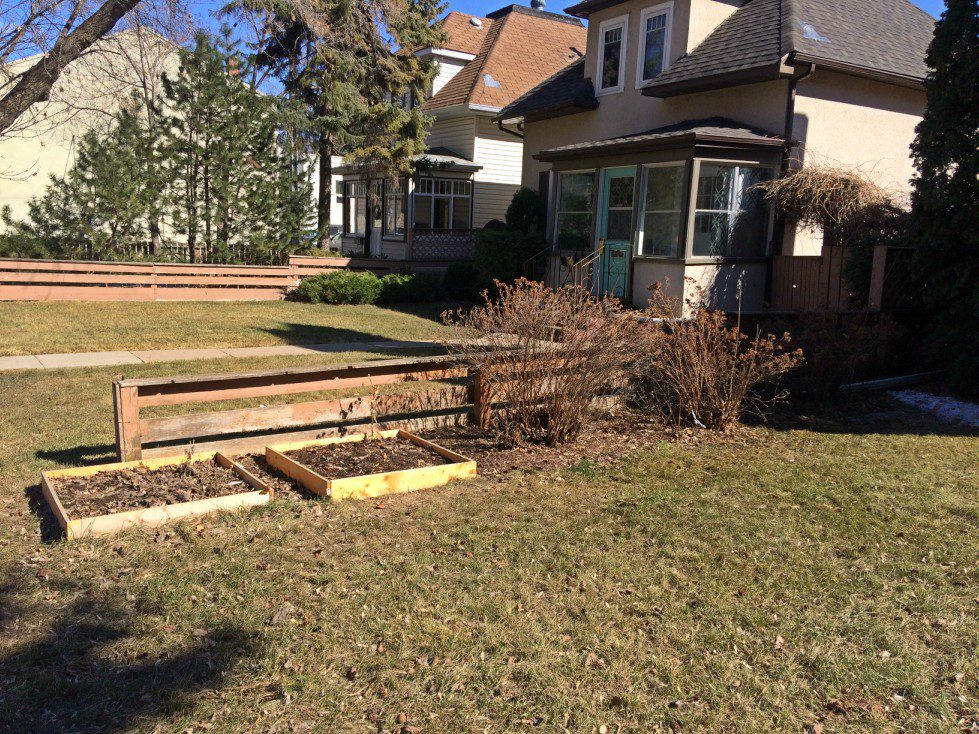
The potentillas were so overgrown and parts of them were even starting to rot. I’m sure they were beautiful in their time, but if I was going to keep them, they were in desperate need of a good pruning because they didn’t flower very much in the summer.
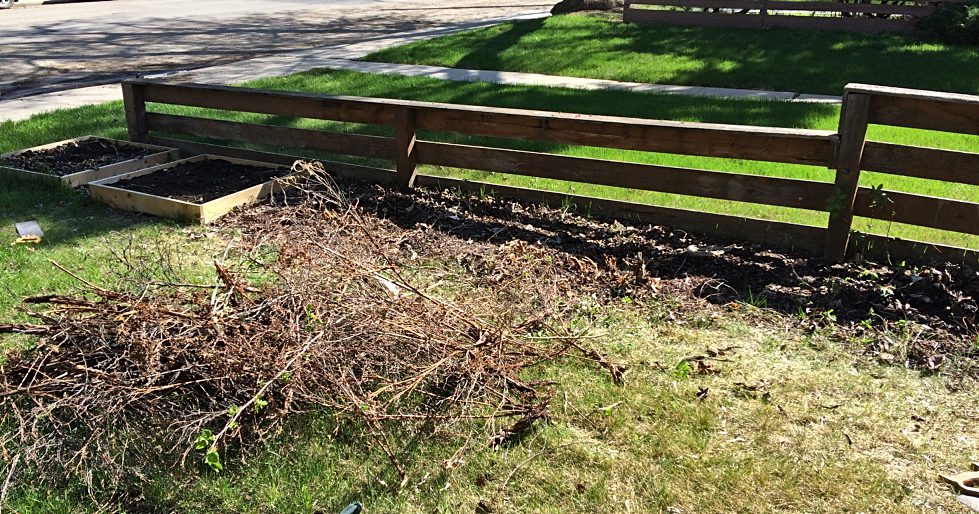
Ordering Soil and Mulch
I’m not sure why, but the thought of ordering soil and mulch from a landscaping company seemed really overwhelming to me. However, I knew that this was too big of a project to be dragging bags of the stuff from a big box store back and forth in my truck.
Regardless, I went with a friend to one of the larger companies in the city and got it done! I ordered 1 yard of pine mulch (the cheapest option) and 2 yards of soil with compost and peat already mixed in. I assumed that because compost and peat were already mixed in, I wouldn’t have to make any further amendments to my soil.
I was wrong.
While the vegetables in the new soil performed alright, there was a noticeable difference from the ones in the soil that I had been improving with compost and manure for 3 years.
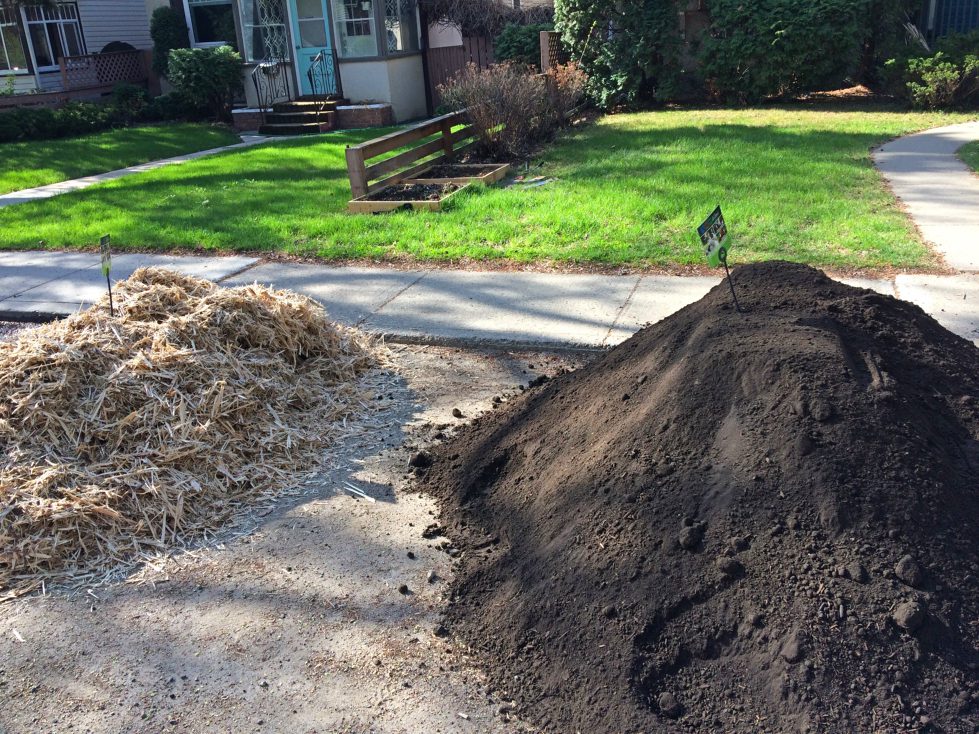
Planting your first vegetable garden? Here are the 10 easiest vegetables to grow, plus 6 tips I wish I would have known.
Creating My Raised Bed Vegetable Garden
I filled up the raised garden beds with soil, surrounded the area with cardboard, and layered over a 4-inch layer of mulch. Technically, I could have left the grass, but I wanted this project to be as maintenance-free and neat-looking as I possibly could. I didn’t want to risk getting complaints from my neighbours because I was behind on the weeding.
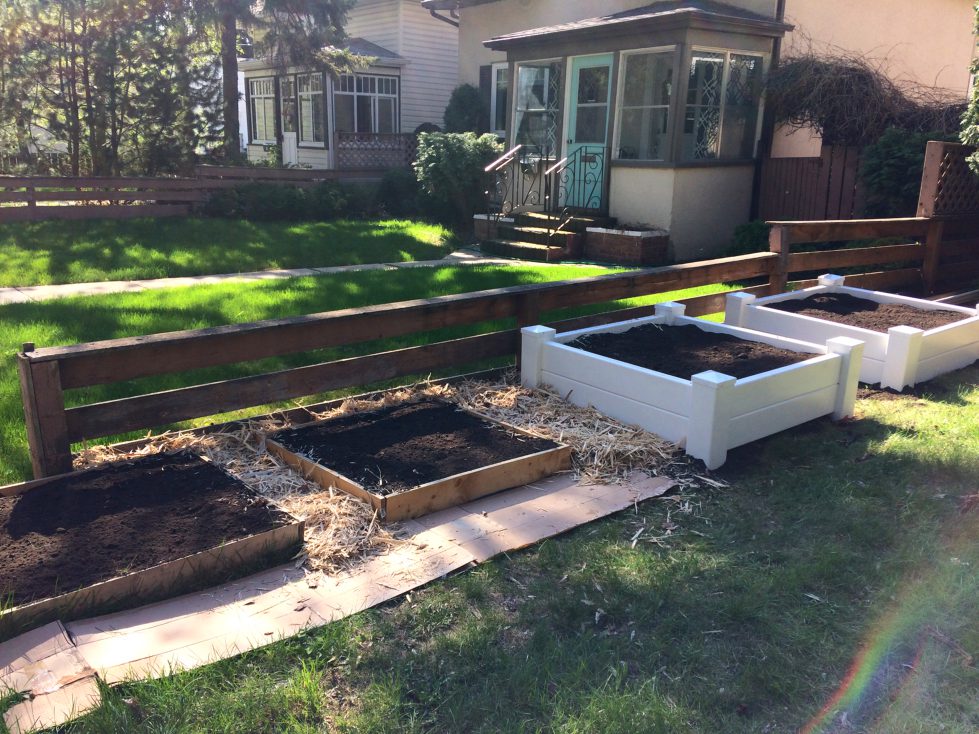
The occasional weed will still come through your mulch. However, I can promise you that these weeds are super easy to pick, especially when you compare the number of weeds you would have otherwise.
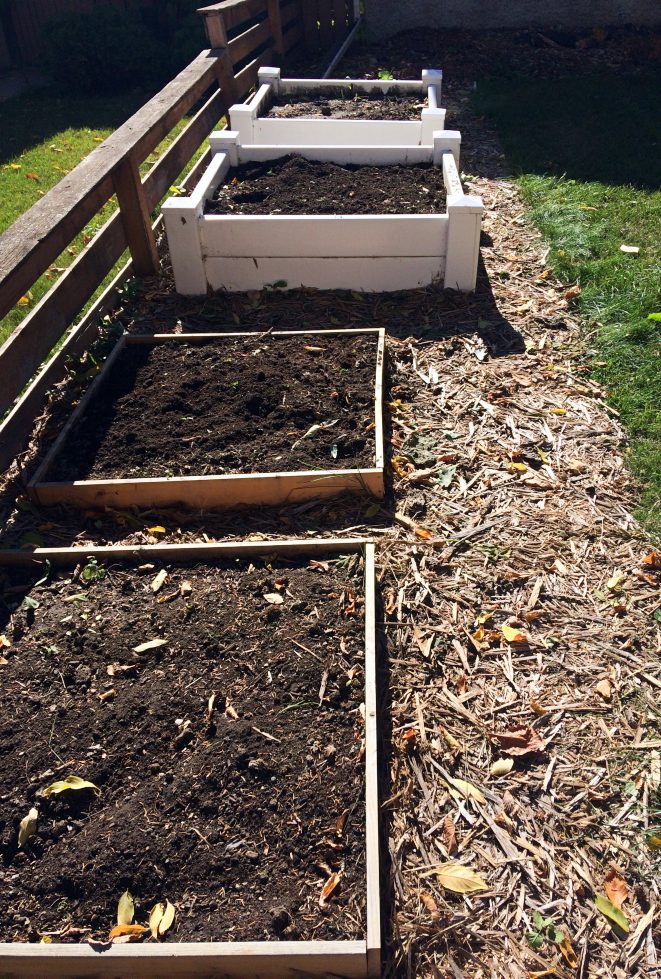
Another thing you should know about mulch is that you’ll have to replenish it every 2-3 years. Wooden mulch will decompose over time, making your formerly 4-inch layer not thick enough to suppress weeds. You can use cedar mulch instead if you don’t want to top up your mulch as often. However, cedar tends to be more expensive.
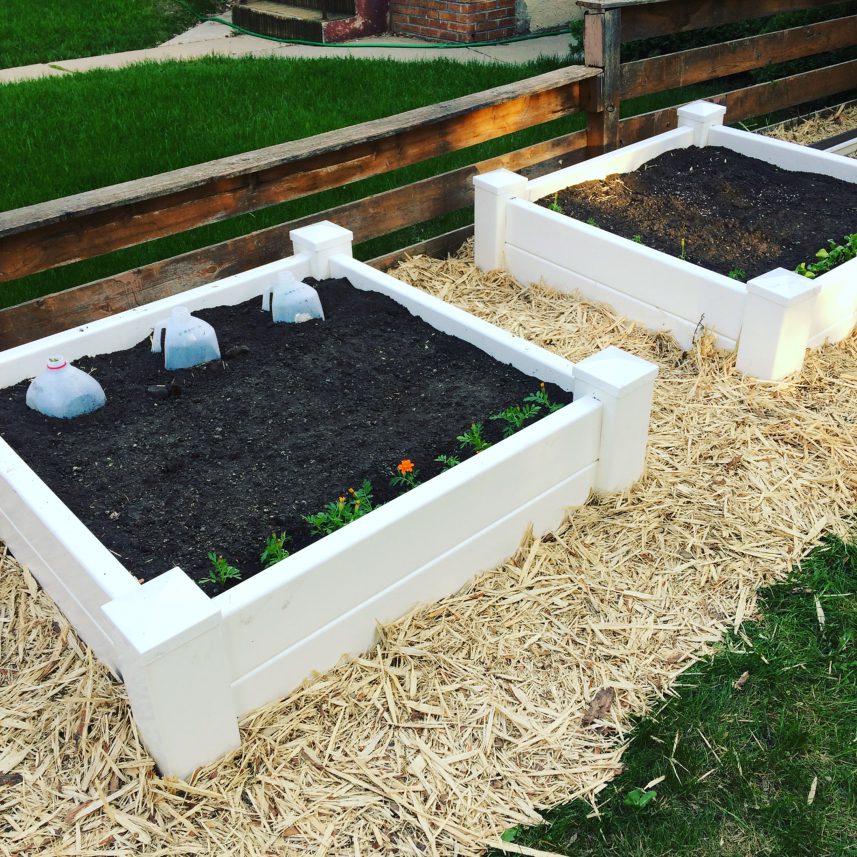
The Best Method of Planting Vegetables in a Small Space Garden
Once the project was done, I planted my new raised beds using the square foot gardening method and the Seeding Square.
If you’re used to traditional rows in a garden, it can seem very strange to switch to this way of planting a garden. But once you try it, you’ll be hooked! You’ll be able to plant more vegetables in the same space and keep down the weeds much easier.
In fact, I found that once I had done the initial major weeding in June, there were barely any weeds after that, and it was easy to simply pull out the few that did manage to come up.
If you need ideas on square foot gardening, I have these 4 free templates (that are colour coordinated with the Seeding Square) that you might enjoy. If you don’t want to use the seeding square, you can figure out the spacing by using Mel Bartholomew’s book. (But seriously, you’ll save so much time and headache with the Seeding Square!)
Get 4 Free Square Foot Gardening Templates

Start your square foot garden the easy way!
You'll get 4 4x4 plans for
- Salad Garden
- Beginner's Garden
- Salsa Garden
- Kid's Garden
Plus a mini email course that gives you short, actionable tips for keeping your garden alive.
NOT ALL PLANTS CAN BE PLANTED TOGETHER
In the bed on the right, I should not have planted that pepper between the artichokes. I had never grown artichokes before and had no concept of how tall they would actually get (3-5 feet!). Needless to say, the pepper did not do well.
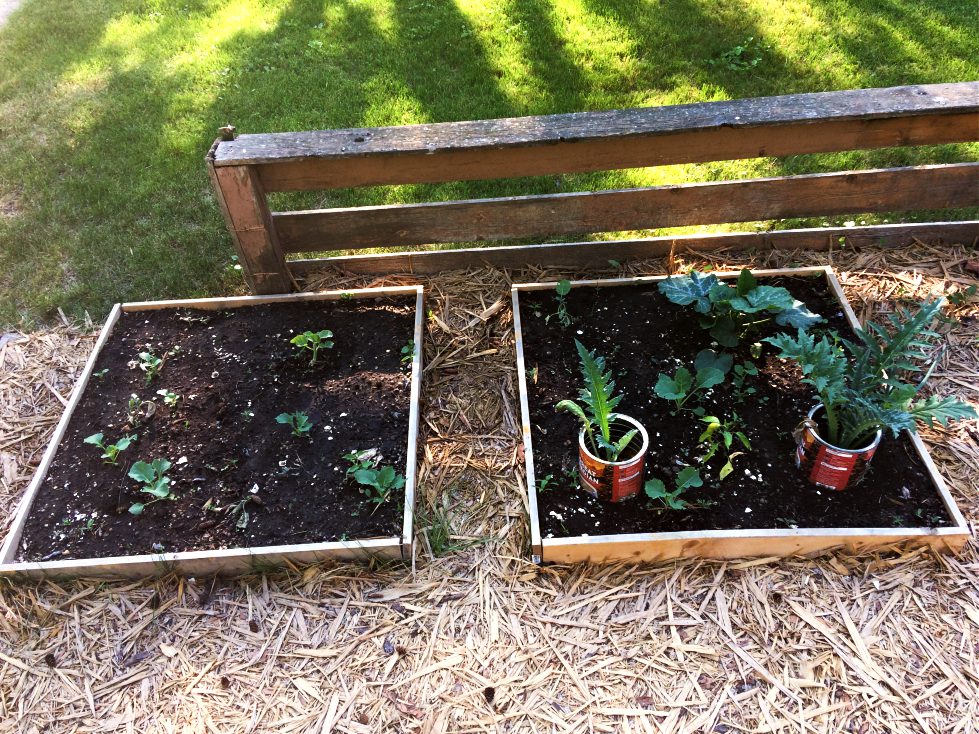
I also did not realize that butternut squash and watermelon would cross with each other. I was blessed with some lovely mutant squash. What do you get when you cross a butternut with a watermelon? A very weird squash that you really don’t want to eat!!
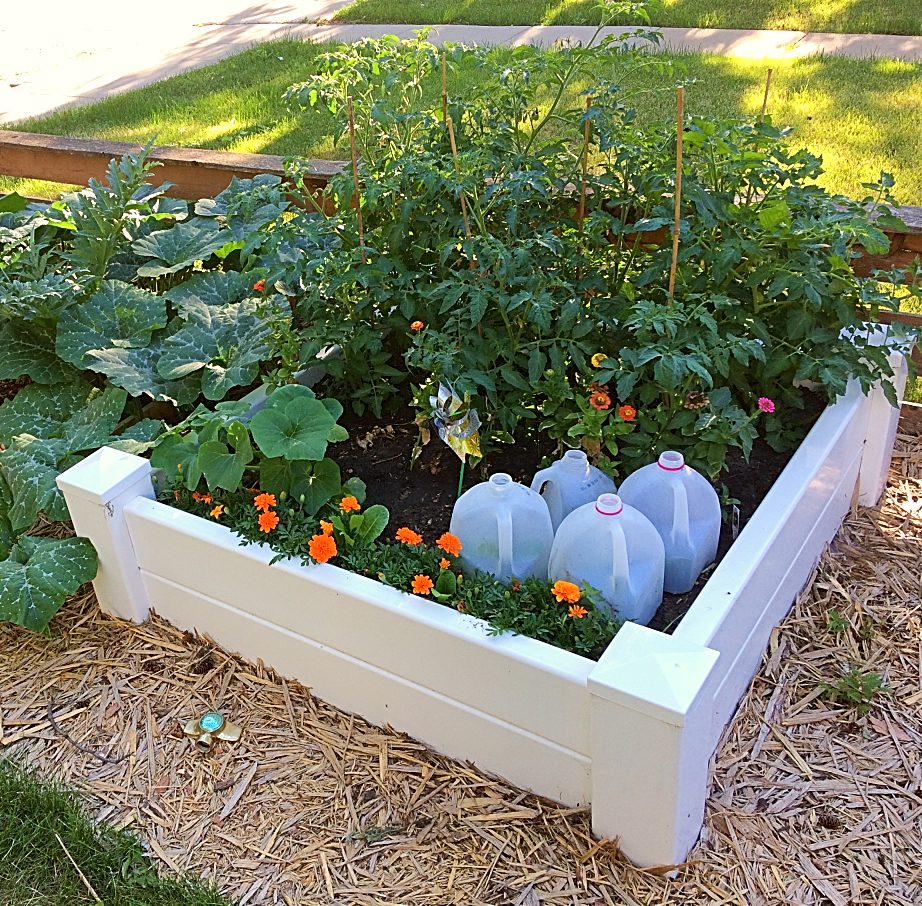
Related: 12 EASY SQUARE FOOT GARDENING TIPS FOR AN ABUNDANT HARVEST
A Front Yard Vegetable Garden Builds Community
Overall, I was really happy with my front yard vegetable garden. It was easy to keep up with and I would often notice people who were walking by enjoying it.
Neighbours would often stop by to chat about the garden, and perfect strangers would stop their walk to ask me questions about the garden if I was outside working on it.
I was a bit nervous about possible theft come harvest time, but, fortunately, that never really became a problem. In fact, my biggest problem was actually the birds that mercilessly picked at any lettuce, kale, beets, and swiss chard that I planted. In future years, I will protect my plants with cloth until they are well established.
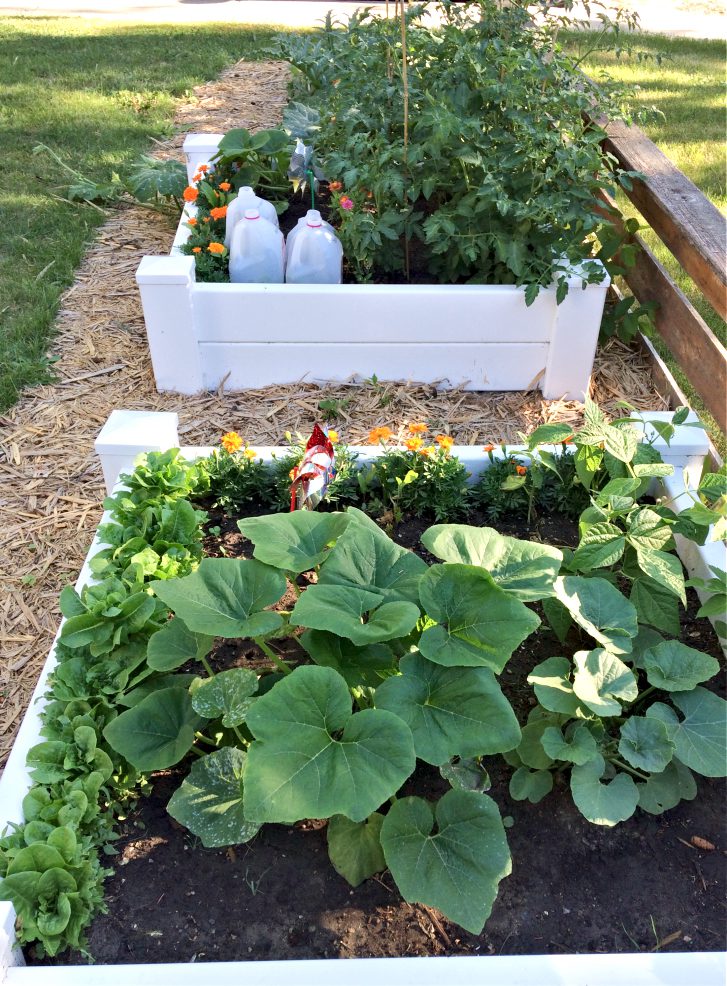
By late summer, the garden was very productive and my mutant butternut squash/watermelon vines had taken over. All in all, I’d say my first front yard raised bed vegetable garden project was a huge success!
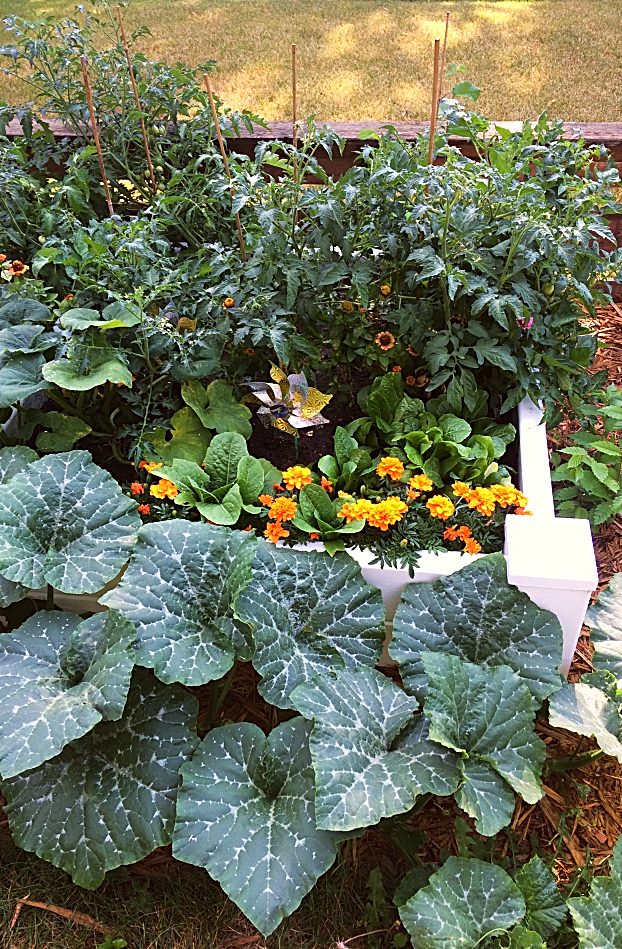
Recommended Resources for a raised bed vegetable garden
If you’re looking to plan your own front yard project, here are a few resources I recommend:
- Mel Bartholomew’s 3rd Edition Square Foot Gardening Book
- The Seeding Square (on the product site or on Amazon)
- The Edible Front Yard Book by Ivette Soler
- A Three-pack, 4×4 Raised Bed Garden Kit
- Or this tiered wooden option
- Or just a basic wooden raised bed
I hope reading about my journey adding raised beds to my front yard inspires you to try something similar with your yard!
If you liked this blog post, follow me on Facebook, TikTok, and Instagram for more cold-climate gardening tips, delicious recipes, and cut flower goodness! I also make weekly videos over on my YouTube channel. I hope to see you there!
P.S. If you love the content I create for Shifting Roots, consider joining our community on Patreon. Your support means the world to me and I am grateful for each and every one of you!
WISH YOU COULD GROW FRESH VEGETABLES IN A SMALL SPACE?
Now you can, with Small Garden, Big Harvest. It’s the fastest way to learn all the intensive gardening techniques that can help you maximize every inch of your available gardening space. With lots of easy-to-do, real-life examples, and 2 done-for-you plans, you’ll be able to start vegetable gardening, even if all you have is an apartment balcony.




Linda Brown
Kristen Raney
Lorne Smith